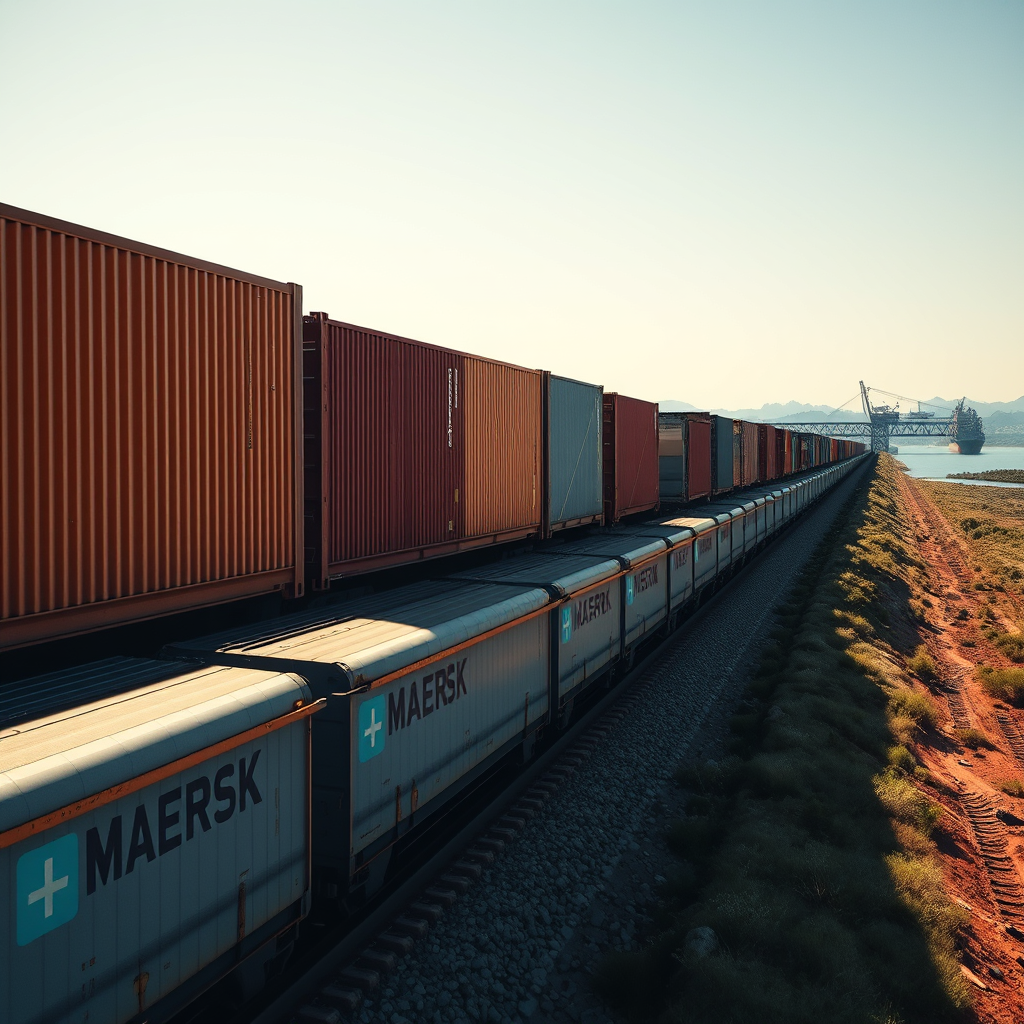Panama Canal Blocked? Maersk’s Rail Solution

Utilizing Rail as a Contingency Strategy for Panama Canal Congestion
The Panama Canal, a crucial artery for global maritime trade, has faced significant operational challenges due to prolonged drought conditions. These restrictions, leading to reduced capacity and potential delays, have prompted shipping giants to explore alternative logistical solutions. This article examines Maersk’s innovative response: the implementation of a rail “land bridge” across Panama, bypassing the canal and maintaining service continuity for its OC1 route connecting Oceania and the Americas. We will delve into the strategic implications of this decision, analyzing the operational changes, technological adaptations required for rail transport, and the broader implications for global supply chain management in the face of geopolitical instability and environmental challenges. The analysis will showcase the adaptability and resilience of the maritime industry in responding to unforeseen circumstances, highlighting the interconnectedness of various modes of transportation in facilitating efficient global trade.
Operational Changes and Route Optimization
Maersk’s solution involves splitting its OC1 service into two distinct loops. Cargo destined for the Americas is offloaded at Balboa, while cargo heading to Oceania is disembarked at Manzanillo. This strategic division allows for efficient distribution via rail across the Isthmus of Panama (approximately 80km). This land bridge utilizes existing rail infrastructure, minimizing the need for significant infrastructural investment. While northbound routes from Philadelphia and Charleston are unaffected, southbound journeys may experience extended transit times due to the added rail segment. This demonstrates a clear prioritization of maintaining reliable service to key North American ports, reflecting market demands and contractual obligations.
Technological Advancements in Rail Transportation
The successful implementation of this land bridge relies heavily on the capabilities of the Panamanian rail system. This requires a robust infrastructure capable of handling significant volumes of containerized cargo. The ability to transport refrigerated goods (reefer containers) is particularly crucial, demanding specialized refrigerated rail wagons equipped with temperature control systems to maintain the integrity of perishable goods. This highlights the need for continuous investment in rail technology to ensure efficient and safe transportation of a diverse range of cargo types. Furthermore, integrated tracking and monitoring systems are crucial for effective logistics management, providing real-time visibility of cargo location and condition. The integration of modern information technology (IT) within the entire transport chain is essential for success.
Geopolitical and Environmental Factors
Maersk’s decision is not isolated but rather a reflection of wider geopolitical and environmental concerns. The ongoing drought affecting the Panama Canal is a direct consequence of climate change, highlighting the vulnerability of critical infrastructure to environmental shifts. The concurrent decision to reroute vessels away from the Suez Canal, due to the conflict in Yemen, emphasizes the interconnectedness of global trade routes and the significant impact of geopolitical instability. This situation underscores the necessity for shipping companies to develop flexible and adaptable strategies capable of navigating unforeseen circumstances and multiple concurrent disruptions.
Strategic Implications for Global Supply Chains
Maersk’s strategic shift illustrates the growing importance of multimodal transportation networks in mitigating risk within global supply chains. Reliance on single modes of transport, like solely utilizing the Panama Canal, exposes businesses to significant disruptions. Diversification of transportation modes, leveraging rail as a contingency, significantly enhances supply chain resilience. This approach enables businesses to maintain service continuity even when primary transport routes are compromised. The success of this approach highlights the necessity for ongoing investment in intermodal infrastructure and robust contingency planning within global logistics strategies.
Conclusions
Maersk’s innovative utilization of a rail land bridge across Panama serves as a compelling case study in adapting to unforeseen challenges within global maritime trade. The strategic decision to split its OC1 service into two loops, utilizing rail transport as a vital component, demonstrates a proactive approach to maintaining service reliability amidst the Panama Canal’s operational constraints stemming from prolonged drought. This solution not only showcases the company’s agility but also highlights the potential of multimodal transportation networks in creating more resilient and adaptable global supply chains. The integration of advanced rail technology, including refrigerated transport wagons and sophisticated tracking systems, emphasizes the evolving needs of the logistics sector. The wider implications extend to the interconnectedness of geopolitical stability and environmental concerns, underscoring the importance of proactive risk management in the face of climate change and regional conflicts. The success of Maersk’s strategy reinforces the importance of diversification and contingency planning as essential elements of robust global supply chain management. It also serves as a model for other shipping companies and industries to consider when facing similar challenges – namely, leveraging diverse transport options to mitigate vulnerability and ensure uninterrupted service delivery in a constantly evolving global landscape.





